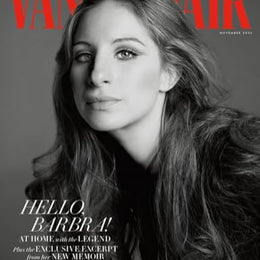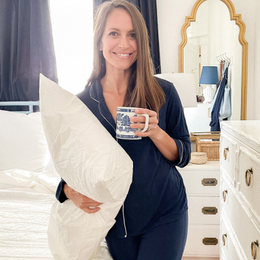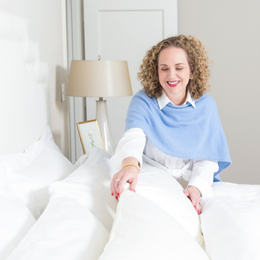If you’re redecorating, rejuvenating, or reinventing your bedroom, an obvious place to start is with your bedding. For a high-impact, low-effort switch, a new duvet cover is a quick edit that can give your bed a refreshed look while also providing you the rest you deserve.

What is a Duvet?
A duvet gets its name from the French word for down and is used to refer to a quilted or flat fabric envelope filled with fibers like down, feathers, or synthetic fill. The earliest versions were made from eiderdown, the down or soft feathers from the breast of a female eider duck. (You’ll still hear bedding occasionally referred to as eiderdown.)
Duvets themselves have been around for centuries and were originally used exclusively by the wealthy and aristocrats. It’s been rumored that the people of Norway used duvets made from eiderdown during Viking times to show off their prosperity. The popularity of duvets then began to surge in the 16th century when European aristocrats and royalty began purchasing duvets for their own homesteads, making them status symbols. Hans Christian Andersen even told the story of a princess trying to sleep on a bed of ten eiderdown duvets in the fairy tale “The Princess and the Pea,” published in the 1800s.
The modern duvet has gained popularity in recent years for a number of reasons. Not only do they look lush and inviting, but duvets offer the undeniable appeal of a clean, fresh bed. In a busy world, duvet covers are also much easier to launder than a full-sized quilt or comforter. Moreover, a duvet is key in achieving a classic-meets-modern bedroom design.
Duvet vs. Comforter: What is the Difference?
There has always been some confusion over duvets and comforters. To break it down simply, a comforter is a stand-alone bed covering, usually filled with down or synthetic fiber. They typically have a durable fabric cover and can be found in a variety of styles and colors. Comforters are also great for colder climates, thanks to their overall warmth. They tend to be bigger and thicker than duvets, extending over the side of the bed. In terms of care, some comforters--if machine washable--will require a large capacity washer and dryer, and many need to be commercially dry cleaned. A common complaint about comforters is that they can go flat through continued use.
A duvet is an ultra-soft bed cover, sometimes known as an insert. It is essentially a fluffy quilt-shaped pillow that goes inside a duvet cover. A duvet is generally filled with down or synthetic fibers but can also be filled with wool or feathers. You’ll find that a duvet is usually fluffier than a comforter but slightly smaller in size. A duvet itself is not meant to stand alone and needs to be covered with a separate duvet cover, which can offer its own advantages.
Advantages of a duvet cover:
- Easily allow you to change out your bedding colors and design
- No top sheet is required, so bed-making is fast and easy
- Offer a modern look, since duvets usually rest on top of the bed with little overhang
- Give a lightweight yet warm bedding option for all climates
- Provide easy storage compared to bulkier quilts and blankets
- Don’t require special large capacity washers and dryers for cleaning
How to Choose a Duvet Cover
Check the Fabric
Duvet covers come in cotton, silk, and synthetic fabric options. As with most things, polyester blends are usually less expensive but also chemically processed and bring some inherent health risks. Silk is a luxurious fabric but tends to be more expensive. Some owners also complain that silk duvet covers slide more than they would like. Cotton, particularly percale cotton, is our favorite option, offering durability, versatility, and, most importantly, comfort.

Opt for Quality
When choosing any bedding, quality is essential. You’ll spend nearly one-third of your life in your bed. You want to create a space that is both beautiful and curated from high-quality fabric and expert workmanship. You want to balance the luxury and comfort of natural, breathable fabric with knowing that the bedding you’ve invested in is going to stand the test of time. Thomas Lee is here to help.
How to use a Duvet Cover
Most duvet covers have either buttons or zippers on one end of the cover, while the other three sides are sewn. On the inside of the duvet cover are ties at each corner that help secure the duvet inside the cover. Once the duvet is in place, you simply zip or button the end and place it on the bed.
Many devoted duvet fans suggest first turning the cover inside out and spreading it out on the bed, then stretching the duvet out on top of the cover so that the corners match. Tie each corner, and then, starting at the closed end of the duvet cover, roll the duvet jelly-roll style to the bottom and turn it right side out. Smooth the bedding with your hands, close the cover, and enjoy your beautiful bed!
Percale, the Perfect Choice
If you love the softness and luxury of our percale sheets, you’ll love that same comfort and opulence in our duvet covers. Our duvets, like our sheets, are also an excellent option for people with allergies or sensitivities. Though your duvet will be fluffy, the cover will keep you cool, and you’ll sleep all night comfortably. If you have questions about any of our products, please contact us for more information. We know you’ll sleep well!




